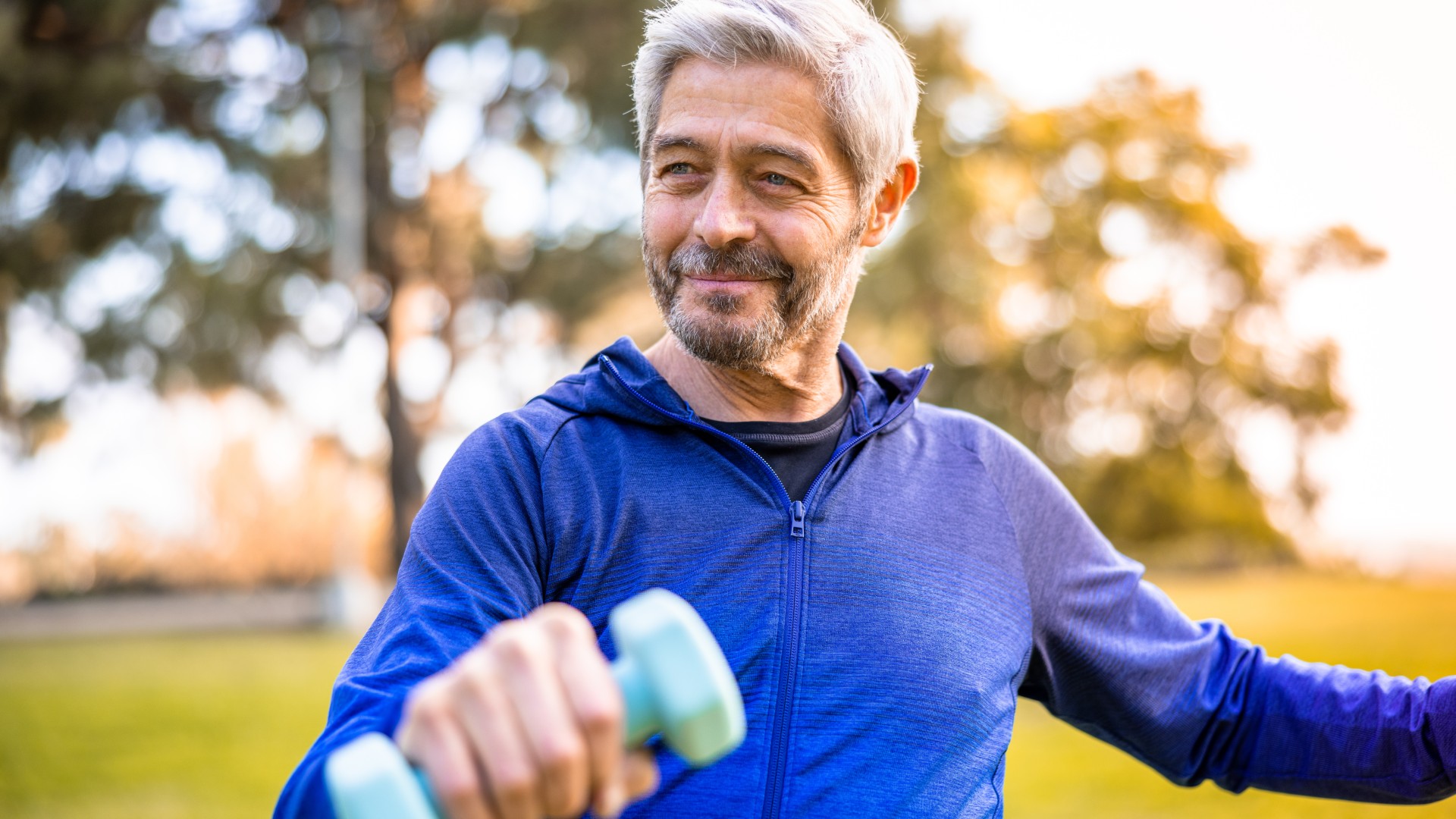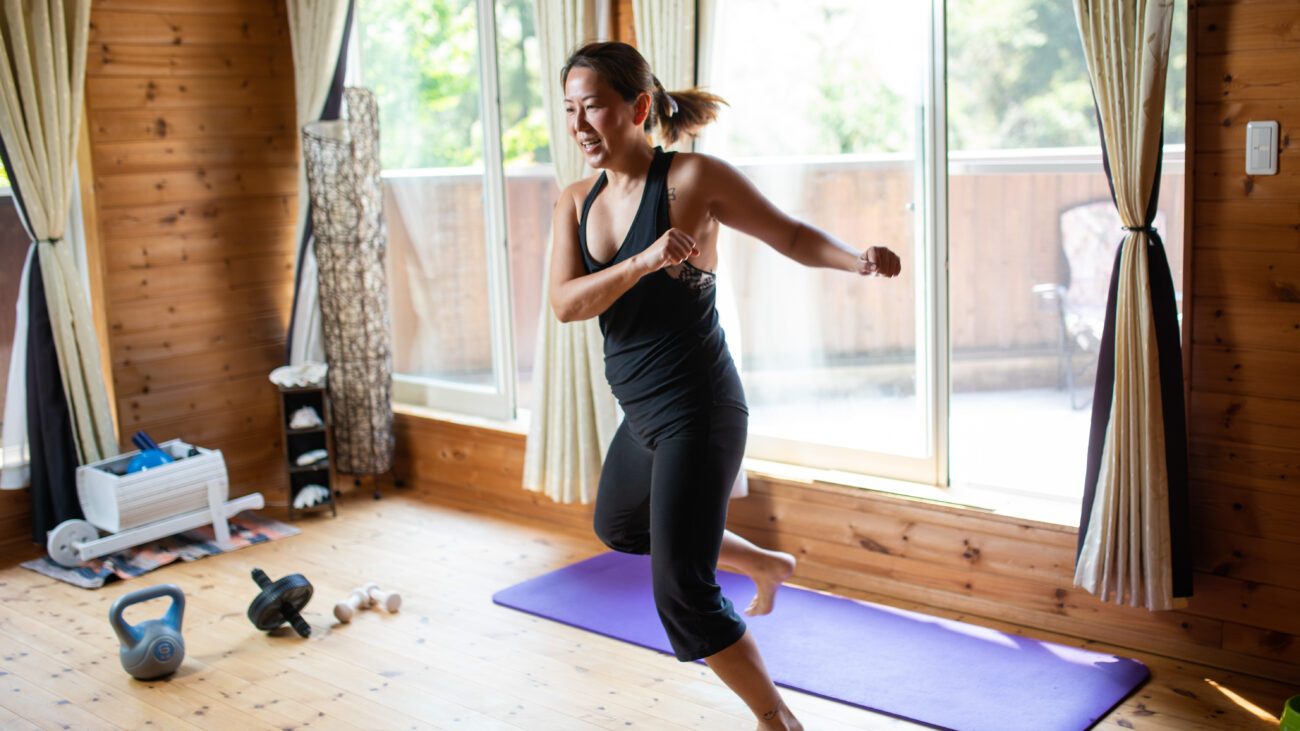Blog
My dad is 72, and these are the 3 strengthening exercises I use to build his strong core and improve balance

I’ve been training my dad ever since COVID-19 hit, and I’ve seen significant improvements in his strength and mobility, including a notable boost to his balance and core strength. It’s one of my proudest achievements.
There are many compound exercises I’ve taught him, but some strengthening exercises I’ve implemented more recently have been focused on building a strong core (not just the abs) and improving overall balance and stability. My primary goal is for him to avoid injury as he gets older.
We’ve had some fun — and wobbles — along the way, but as a personal trainer, nothing gives me more joy than seeing those gains show up in everyday life, making his day-to-day more enjoyable, too. He tells me that putting his shorts on is now much less of a task.
Want to sculpt a stronger core, increase balance and reduce your likelihood of injury? Here are three moves I swear by.
What are the three strengthening exercises?
Give these a try.
Bosu single-leg deadlifts
Try standing on one leg and performing a deadlift while also standing on a Bosu or balance trainer. It tests your balance, yes, but also coordination and mind-muscle connection, which can help you activate the working muscles better.
I think balance training is underrated, and it becomes more and more important as you age. Good balance helps prevent falls and improves the stability of your muscles and joints, which will protect you from injuries. Besides, it’s an indirect way to build core strength without relying on abs workouts.
To keep the strength element of this exercise, hold a set of dumbbells. Stand on the balance trainer with your feet hip-width apart, then hinge forward at the hips and begin lowering your chest toward the floor, while raising one leg into the air straight behind you.
If you’re holding weights, try tapping them down in front of you, pause when your chest is roughly parallel to the floor, then drive up through your standing leg to stand. Complete 8 reps, then switch sides. Aim for 3-4 sets.
Unfamiliar with the deadlift variation? Learn how to do single-leg Bosu ball deadlifts. The key is to avoid twisting your hips and stay controlled throughout.
Weighted V-sit ‘exchanges’

This is probably the core exercise I’ve seen my dad improve most on, and it’s fun to do. I like to use a light dumbbell, but you can use anything that you can hold between both hands and feet for the given number of reps below.
The V-sit is a true core exercise, but it also tests balance and coordination. Add weight, and you’ll move your core muscles through more resistance, making the exercise harder.
Most people will feel the V-sit target their abs, waist muscles (the obliques), hips and quads. If you feel pain in your lower back, try bending your knees or stop and check out these core exercises for back pain as a safer alternative.
Start on your back and extend your arms and legs onto the exercise mat. Hold a weight or similar with both hands. Brace your stomach, slightly lift your shoulders away from the mat, then lift your upper body and legs into the air together, reaching your fingers and toes to meet overhead.
Place the weight between your feet and grip it, then lower back to the starting position. On the next rep, exchange the weight from feet to hands. Complete 8-10 reps and 3-4 sets.
Here’s how to do V-sit-ups step-by-step.
Seated single-arm shoulder press

Single-sided movements require core stability, balance and coordination to control the load on one side of your body and prevent you from falling.
My dad has a habit of trying to (sneakily) use his legs during shoulder presses, even when I scold him that it’s a strict press, not a push press.
To combat this, I now ask him to sit on a workout bench with the bench at 90 degrees and his back resting against it. With this tall posture and his feet planted on the ground, he can’t use his legs to facilitate movement. That means all the power and strength come from his upper body — the shoulders, triceps and pecs — and stability generates from his core.
To do it, sit on a bench (as above) and hold a kettlebell or dumbbell in one hand. Rack it to your shoulder and ensure your lower back isn’t arching away from the bench.
Keeping a straight back, press the weight overhead and extend your arm, biceps close to your ear throughout. Pause, then lower the weight to your shoulder with control. Avoid leaning to one side.
Complete 8 reps, then switch sides. Aim for 3-4 sets.
The instability of the weight will work the stabilizer muscles in your shoulders and core, including the rotator cuff muscles that surround the shoulder blades, the abdominals that help support your torso, and the erector spinae, which are spinal stabilizers.
If you do want to double load and hold a weight in each hand (as above), you can.
Follow Tom’s Guide on Google News to get our up-to-date news, how-tos, and reviews in your feeds. Make sure to click the Follow button.












